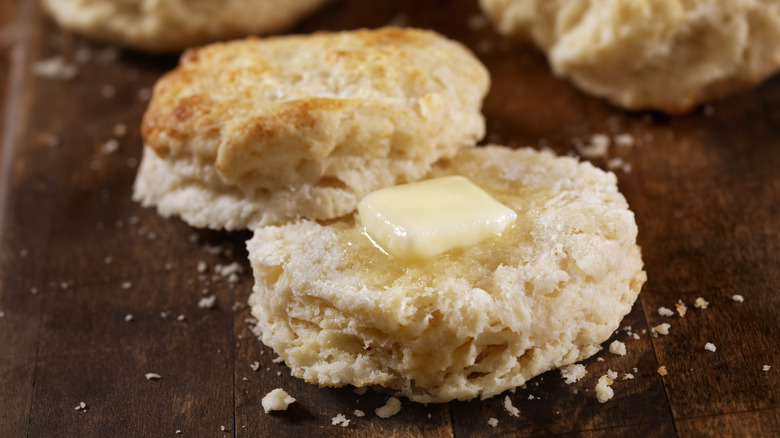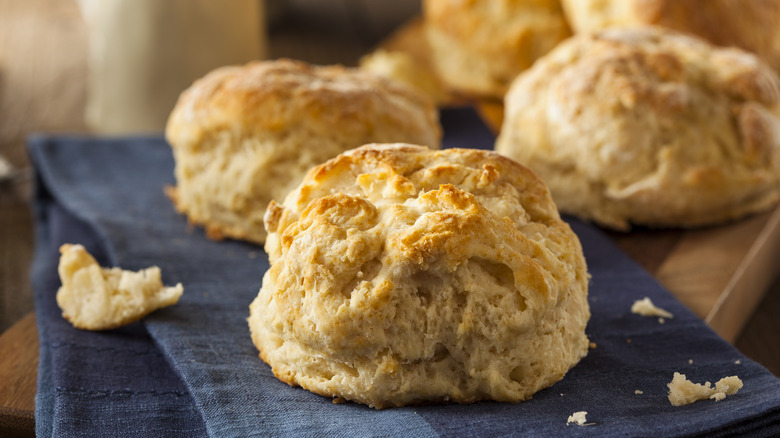Frozen Butter Is The Key To Golden, Flaky Biscuits
There's nothing more comforting than soft, flaky biscuits made from scratch. Biscuits are full of delicious dairy fat, featuring a dairy trifecta of butter, heavy cream, and buttermilk, and seasoned biscuit bakers know that cold is key. As with many other Southern-style baked goods, butter is the most important element in achieving the best taste and texture for your biscuits, but there's a special trick to make this ingredient even more effective. If you want perfectly golden, ultra-flaky biscuits, freeze the butter before working it into your biscuit dough.
Along with the leavening abilities of baking soda or baking powder, butter can actually help biscuits rise. If properly interspersed throughout the biscuit dough, cold butter reacts with the hot temperatures of the oven, creating little pockets of steam that help make biscuits fluffy and flaky. When it comes in contact with lots of heat, the rapidly melting frozen emulsion of fat and water helps form tender layers in the biscuit.
If you work with room-temperature butter, the temperature of your kitchen and the natural heat from your hands will start melting the butter prematurely, and the dry flour will absorb it before it has the chance to produce steam in the oven. This leads to more dense, flat biscuits rather than a tall, golden stack of layers. Essentially, the colder the butter, the better the biscuit. This cold butter rule also applies to other flaky and laminated pastries, like croissants, pie crusts, and scones.
Frozen butter for fantastic biscuits
Of course, cold butter can be a bit difficult to work with, especially if you're trying to mix it with dry ingredients. So, what's the best way to incorporate cold butter into biscuit dough? Well, that depends on your preferences. Some recipes swear by cubed frozen butter, while others tout the superiority of grated frozen butter. With all baking tips and techniques, both methods have pros and cons.
Grating frozen butter results in small, uniform pieces that easily incorporate into the dough with minimal work, whereas cubing frozen butter creates larger steam pockets and requires forks or a pastry cutter to combine with the flour. While the larger chunks of cubed butter have the potential to stay cold longer than a thin sliver of grated butter, the extra effort it takes to work cubed butter into the biscuit dough could lead to early melting and be counterproductive to your efforts for flaky biscuits.
If you choose to cube your butter, be sure to start with chilled butter straight from the refrigerator and pop it back in the freezer for a few minutes after cutting to offset the heat from your hands. If you choose to grate your butter, start with a solidly frozen stick and grate, then place it back into the freezer for a bit until you're ready to add it to the flour.

